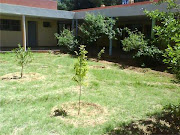What is a Descriptive Essay?
The descriptive essay is a genre of essay that asks the student to describe an object, person, place, experience, emotion, situation, etc. This genre encourages the student’s ability to create a written account of a particular experience. What is more, this genre allows for a great deal of artistic freedom (the goal of which is to paint an image that is vivid and moving in the mind of the reader).
One might benefit from keeping in mind this simple maxim: If the reader is unable to clearly form an impression of the thing that you are describing, try, try again!
Here are some guidelines for writing a descriptive essay:
Take time to brainstorm
If your instructor asks you to describe your favorite food, make sure that you jot down some ideas before you begin describing it. For instance, if you choose pizza, you might start by writing down a few words: sauce, cheese, crust, pepperoni, sausage, spices, hot, melted, etc. Once you have written down some words, you can begin by compiling descriptive lists for each one.
Use clear and concise language.
This means that words are chosen carefully, particularly for their relevancy in relation to that which you are intending to describe.
Choose vivid language.
Why use ‘horse’ when you can choose ‘stallion’? Why not use ‘tempestuous’ instead of ‘violent’? Or why not ‘miserly’ in place of ‘cheap’? Such choices form a firmer image in the mind of the reader and often times offer nuanced meanings that serve better one’s purpose.
Use your senses!
Remember, if you are describing something, you need to be appealing to the senses of the reader. Explain how the thing smelled, felt, sounded, tasted, or looked. Embellish the moment with senses.
What were you thinking?!
If you can describe emotions or feelings related to your topic, you will connect with the reader on a deeper level. Many have felt crushing loss in their lives, or ecstatic joy, or mild complacency. Tap into this emotional reservoir in order to achieve your full descriptive potential.
Leave the reader with a clear impression.
One of your goals is to evoke a strong sense of familiarity and appreciation in the reader. If your reader can walk away from the essay craving the very pizza you just described, you are on your way to writing effective descriptive essays.
Be organized!
It is easy to fall into an incoherent rambling of emotions and senses when writing a descriptive essay. However, you must strive to present an organized and logical description if the reader is to come away from the essay with a cogent sense of what it is you are attempting to describe.
.jpg)
.jpg)

.jpg)
.jpg)






